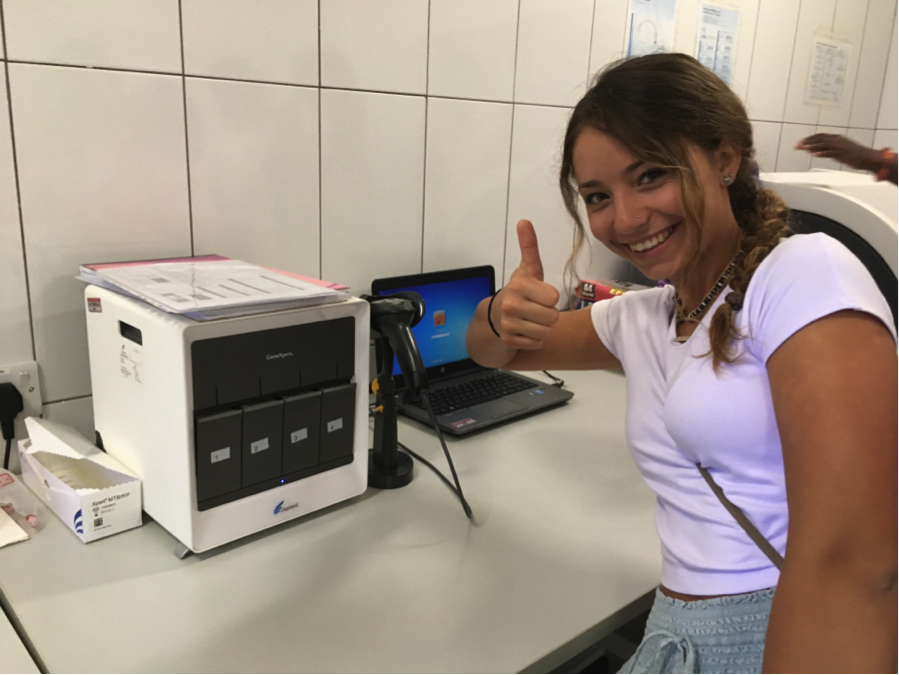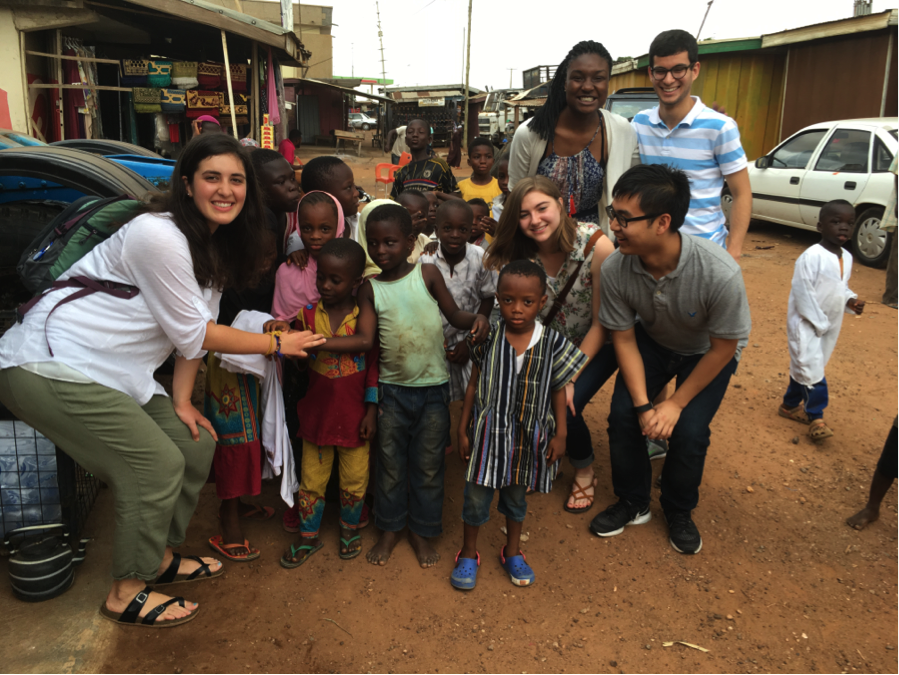by Danielle Tsougarakis, Bioengineering ’20; Jason Grosz, Bioengineering ’19; Ethan Zhao, Bioengineering ’19; and Kate Panzer, Bioengineering ’18

David Issadore, a faculty member in the Department of Bioengineering at the University of Pennsylvania teaches an engineering course ENGR566 – Appropriate Point of Care Diagnostics. As part of this course, he and Miriam Wattenberger from CBE, have taken nine Penn students, most of them majoring in Bioengineering, to Kumasi, Ghana, to study the diagnosis of pediatric tuberculosis. While in Ghana, these students are blogging daily on their experiences.
Today is a holiday, Africa Day! That being said, we were unable to go to any hospitals, clinics, or schools today. Instead, after breakfast we continued our morning with a tour of Kumasi Center for Collaborative Research in Tropical Medicine (KCCR). KCCR specializes in tuberculosis diagnosis among other diseases – they are partnered with 40 hospitals and clinics throughout the country. Hospitals will send sputum and blood samples to KCCR for further diagnostics. One of the scientists at the center explained the procedure for testing for multidrug resistant (MDR) tuberculosis. When patients are diagnosed with mycobacterium tuberculosis, they are given first line of defense drugs, which include rifampin, isoniazid, pyrazinamide, ethambutol, and streptomycin with the first two drugs being the most potent. When no improvement shows from theses antibiotics, the patient will provide a sample to be tested in the GeneXpert for resistance to rifampin and isoniazid. After the samples are decontaminated, the sample is run through the GeneXpert to test for resistance to rifampin as well as the amount of MTB present in the sample (low, intermediate, high). If the sample expresses rifampin resistance then it is MDR TB. In addition to our comprehensive information session, we were also able to go into various laboratories throughout the facilities and view much of the equipment used in TB diagnostics such as the GeneXpert, thermocyclers, and PCR machines. We also had the opportunity to view gram-negative strains of tuberculosis up close under a microscope.

Later, one of the Ghanaian students drove us around to see his house and the area where he grew up. Distance-wise, his home isn’t far, about 4-5 miles away. However, driving took more than half an hour, not because of traffic, but because there were so many holes on the road that it was necessary to drive slowly over them at less than walking speed. We first visited the market where his mother owned a store. There, a large group of kids gathered and stared at us. Unable to communicate with those who only spoke Twi, we took out our deck of cards and managed to set up a game. Everything seems to be given more freedom, as children and chickens alike are allowed to roam the market freely, trusted to return to their respective homes at the end of the day. We then visited his grandmother’s house. His grandmother was originally from Northern Ghana, and she only spoke Hawza, a language spoken primarily by the Nigerian Muslim community, and not Twi, in contrast with the majority of the population. Overall, it was a great experience to go off campus to see the environment in which everyday Ghanaians work and live.

